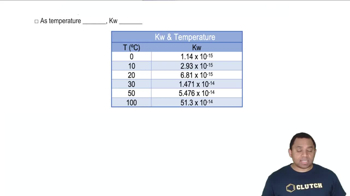Here are the essential concepts you must grasp in order to answer the question correctly.
Equilibrium Constant (K)
The equilibrium constant (K) is a numerical value that expresses the ratio of the concentrations of products to reactants at equilibrium for a given chemical reaction at a specific temperature. It provides insight into the extent of the reaction; a large K indicates that products are favored, while a small K suggests that reactants are favored.
Recommended video:
Le Chatelier's Principle
Le Chatelier's Principle states that if a system at equilibrium is subjected to a change in concentration, temperature, or pressure, the system will adjust to counteract that change and restore a new equilibrium. This principle helps predict how changes will affect the position of equilibrium and the value of the equilibrium constant.
Recommended video:
Temperature Dependence of K
The value of the equilibrium constant (K) is temperature-dependent, meaning it can change with variations in temperature. For exothermic reactions, increasing temperature typically decreases K, while for endothermic reactions, increasing temperature usually increases K. Understanding this relationship is crucial for calculating K at different temperatures.
Recommended video:
Kw Temperature Dependence
 Verified step by step guidance
Verified step by step guidance

